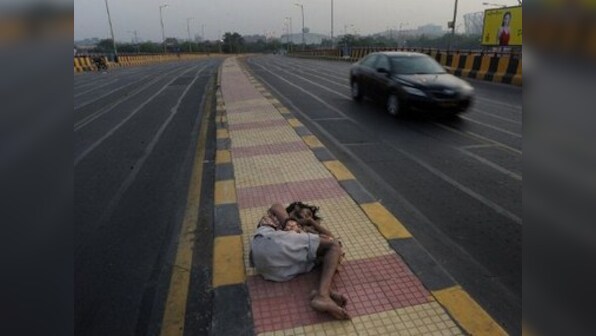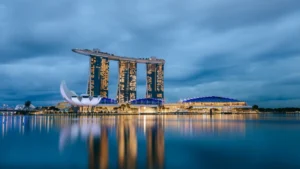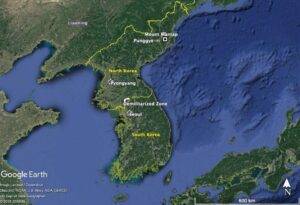Hey there, ever wondered why India feels like two different countries rolled into one? On one hand, we’re making huge strides, becoming the world’s fourth-largest economy, boasting Vande Bharat trains, expressways, and digital payments that would make many developed nations nod in approval. But then, you step outside, and boom—it’s a different world altogether. Potholes, traffic nightmares, polluted air… it’s a bit of a head-scratcher, isn’t it? This article tries to unpack why this dual reality exists, diving deep into the layers of India’s urban life.
Audio Article
The Two Sides of the Coin: India’s Tiered Reality
You know, it’s almost like we’re living in a paradox. Inside our homes, many of us enjoy a life that mirrors developed nations, filled with modern conveniences and comforts. Yet, the moment we step out, the “developing” label slaps you right in the face. This isn’t just about the poor, mind you. Even if you’ve worked hard, landed a great job, and earn a good salary, you’ll still face these everyday struggles. It seems that simply having money doesn’t always buy you a smoother ride when the roads themselves are, well, not so smooth.
This fascinating idea of India being divided into “tiers” comes from a tweet by Jaydeep Sen Sharma, and it really helps to explain things. He suggests we can look at India in three distinct tiers, each with its own characteristics, and each showing a very different picture of our progress and challenges.
Key Points:
- A Paradoxical Existence: Many Indians experience a “developed world” life indoors, but a “developing world” reality outdoors.
- Universal Challenges: Urban infrastructure issues affect everyone, regardless of their economic status.
- The Three Tiers of India: A framework, proposed by Jaydeep Sen Sharma, to understand the different realities of life in the country.
Tier 1: The Shining Example – Where Private Power Reigns
Let’s start with the bright side, the India that often makes headlines and fills us with pride. This is “Tier 1 India,” the shining example of economic growth and modern living. It’s driven almost entirely by the private sector, where comfort and convenience are king. Think about it: fancy cafes, quick doorstep deliveries, and services at your fingertips.
Take Bengaluru, for instance, our very own “Tech Capital.” You might find someone like Aditya, strolling through Indiranagar, grabbing a takeaway coffee from Starbucks. Later, he might be chilling at a co-working space, snagging nachos from a vending machine, and then, with a few taps on his phone, summoning a Rapido auto to whisk him home. After a long day, he could easily unwind at a place like Bob’s Cafe, enjoying a craft beer. This kind of urban lifestyle, one centered around effortless comfort and convenience, might even be hard to find in some truly developed economies.
Or consider Delhi, where Rimi, perhaps working for a swanky law firm, might be dining at chic cafes in Hauz Khas. She might then head to Khan Market, an upscale hub in South Delhi. The convenience extends to things like ordering a pedicure through UrbanClap, right to her doorstep. In many developed countries, a simple pedicure might involve driving somewhere, but here, in Tier 1, such services arrive at your home within minutes. Even something like getting a house help can be done in about ten minutes! It’s all about ease, about having everything delivered or available with minimal effort. This part of India truly showcases a thriving, comfortable urban experience.
Key Points:
- Private Sector Driven: Tier 1 India is largely powered by private businesses focusing on consumer comfort.
- Modern Conveniences: Examples include easy access to high-end cafes, co-working spaces, quick transport, and doorstep services.
- Examples: Bengaluru (tech capital with easy commutes and social spots), Delhi (upscale markets, on-demand services).
- Effortless Lifestyle: The focus is on ease and convenience, often surpassing what’s available in some developed nations in terms of accessibility.
Tier 2: The Government-Private Mix – Where Things Get Murky
Now, here’s where the narrative starts to shift, and perhaps, where some of the frustration creeps in. Tier 2 India is where the government and private sector are supposed to work hand in hand. We’re talking about the basics: roads, footpaths, drainage systems, waste management, public transport, and traffic. And this, my friends, is where things tend to get messy. Really messy.
It’s almost astounding, really, when you see how many Indians react to visuals from war-torn countries. Their first thought isn’t “Oh, how terrible,” but rather, “Wow, their cities still look cleaner and have better infrastructure than ours.” This observation has popped up concerning Gaza and, more recently, Tehran. It makes you pause, doesn’t it? If countries ravaged by conflict can maintain a better urban infrastructure, what does that say about ours?
So, while Aditya might be happily paying ₹200 for his Starbucks coffee, he still has to navigate the same congested streets that millions of other Bengaluru residents use. The traffic in Bengaluru has, sadly, become a way of life, something you just accept. It’s so bad that even Deputy Chief Minister D.K. Shivakumar reportedly said that God himself couldn’t fix Bengaluru’s roads. That’s a stark statement, don’t you think?
In Mumbai, simply walking on a footpath feels like an Olympic sport. They’re either overflowing with garbage or crammed with parked cars, making pedestrian movement nearly impossible. Even in affluent areas like Bandra, with its exorbitant homes and trendy restaurants, the dirt and broken infrastructure are plain for all to see. And catching a local train in Mumbai? That’s not just commuting; it’s an extreme sport, forcing people to carefully plan their entire day around it.
Then there’s Gurugram (DLF Gurgaon, as it was mentioned), where you can find homes worth crores of rupees and shop in luxurious malls. But step outside these polished facades after a bit of rain, and you’re confronted with flooded streets and general chaos. Kolkata faces a similar predicament.
Essentially, Tier 2 issues arise where government services intersect with public spaces, even if there’s private collaboration. When a private entity takes sole responsibility, as seen in some exclusive DLF societies, things are markedly better. They build their own footpaths, parks, and roads, and you don’t encounter the same problems that plague public thoroughfares. But what’s the point of all this “growth story” talk if you can’t even walk peacefully on your city’s streets, despite paying taxes and contributing to this very growth? It leaves one pondering, “What exactly are we growing towards?”
Key Problems and Their Impact (Tier 2):
| Key Problem | Impact |
| Poor Road Conditions | Traffic congestion, difficult commutes, risk to pedestrians and drivers. |
| Blocked/Dirty Footpaths | Impedes pedestrian movement, forcing people onto dangerous roads, contributes to overall urban squalor. |
| Ineffective Waste Management | Accumulation of garbage, unhygienic public spaces, environmental pollution, health hazards. |
| Flooding (during rain) | Disruption of daily life, damage to property, increased traffic chaos, highlights inadequate drainage systems. |
| Overcrowded Public Transport | Difficult for daily commuters, impacting productivity and quality of life. |
| Lack of Accountability | Politicians and authorities sometimes deflect blame for urban issues (e.g., “God can’t fix roads,” “rain is natural”), leading to a lack of urgent action. |
Key Points:
- Government-Private Collaboration: Tier 2 involves sectors where government and private entities ideally work together on essential urban services.
- Infrastructure Challenges: Roads, footpaths, drainage, waste management, public transport, and traffic are major pain points.
- International Comparison: Indian cities, despite economic growth, are perceived as having worse urban infrastructure than some war-torn countries.
- Examples: Bengaluru’s notorious traffic, Mumbai’s impassable footpaths and difficult local train commutes, Gurugram’s flooding after rain.
- Private Success vs. Public Failure: Exclusive private developments (like DLF societies) often maintain better internal infrastructure, highlighting the shortcomings of public governance in these areas.
- Questionable Growth: The disconnect between India’s economic growth narrative and the poor quality of its basic urban infrastructure.
Tier 3: The Government Monopoly – A Black Hole of Frustration
If Tier 2 is murky, then Tier 3, where the government holds a complete monopoly and private companies essentially can’t even get a foot in the door, feels like a black hole. This is the part of India that everyone dreads interacting with, hoping they never have to face it. We’re talking about the police, the courts, and the municipalities.
Nobody wants to go to these places, but often, you have no choice when life throws a curveball. Your car gets stolen? You go to the police. Your drainage overflows? You call the municipality. Potholes appear on the road? You approach the local authorities. Tier 3 India is often described as a system where, once you’re in, it might take years to get out. It’s a slow, cumbersome, and often frustrating process.
This very slowness, perhaps, explains the rise of “strongman” politicians (bahubali neta, as mentioned). Why spend a decade battling it out in court over a legal dispute when a powerful local leader can, supposedly, mediate and resolve it quickly? It’s a pragmatic, if unfortunate, solution born out of sheer desperation with the system. Consider the Delhi property case that dragged on for 26 years—twenty-six years for one property dispute! It truly makes you wonder about the efficiency of our legal system.
And the police? A mere 25% of Indians actually trust them. This dismal state of affairs has led to a widespread public acceptance that Tier 3 simply won’t work. The serious consequence of this resignation is that rules and laws become mere suggestions. Traffic signals? Just a guideline, it seems. Waiting in line? A formality, not a norm. This is why people don’t fear the police; they fear someone saying, “Do you know who my father is?” The system’s inability to enforce rules breeds a culture of disrespect for those very rules.
Now, I’m not saying GDP growth is useless. High growth can truly transform lives; incomes may rise, leading to more spending on health, entertainment, and better food. But what I am trying to convey is that mere economic numbers don’t reflect the true quality of life in India. For that, you need to look beyond the balance sheets and at these fundamental daily experiences. India may be excelling in Tier 1, but what about Tier 2 and Tier 3, where the government’s role is absolutely crucial?
It’s genuinely disheartening to note that, as far as I can tell, there doesn’t seem to be a single politician who genuinely prioritizes urban civic infrastructure—making our cities better. We’ve seen Delhi’s Chief Minister deflect blame for waterlogging during rains, saying it’s “natural.” And the Deputy Chief Minister of Bengaluru reiterated that “God can’t fix roads.” It’s almost as if they’re washing their hands of the problem, claiming divine intervention or natural phenomena are the culprits.
What these politicians might not fully grasp is that these very problems are a key reason why some of India’s brightest and most talented individuals, those working in top jobs in places like Singapore or the US, are hesitant to return home. I have friends in such positions who, despite their deep roots, cite India’s quality of life as a significant deterrent. Instead of attracting these minds back, we seem to be encouraging more Indians to leave. This brain drain, something discussed in an earlier video about IIT rankers preferring to stay abroad, is a clear signal.
I don’t think Indian politicians lack intelligence; in fact, I might even say they are some of the sharpest minds in our country. However, they have seemingly made a conscious decision that urban civic infrastructure isn’t a priority because, let’s be honest, it doesn’t always translate into immediate political gains or votes. This is, quite frankly, a sad reality—they might be taking urban voters for granted because their votes come from other segments of the population. Their reasoning, it seems, is, “Why bother fixing the roads?” This attitude must change, especially when a significant portion of the country’s tax revenue comes from urban populations who, in return, receive such dismal services.
Key Problems and Their Impact (Tier 3):
| Key Problem | Impact |
| Police Inefficiency/Mistrust | Low public trust (only 25% trust), inability to enforce rules, rise of “strongmen” as alternative dispute mediators, lack of fear for the law. |
| Judicial Delays | Protracted legal battles (e.g., 26-year property case), discourages legal recourse, promotes alternative “justice” systems, creates a sense of helplessness. |
| Municipal Dysfunction | Unresolved civic issues like overflowing drains, potholes, and waste, leading to a degraded urban environment and direct impact on citizens’ daily lives. |
| Lack of Accountability | Politicians deflect blame for civic issues, leading to inaction and a perception that urban problems are not a priority. |
| Brain Drain | Talented Indians choose to stay abroad due to poor quality of life and civic infrastructure, hindering national development and innovation. |
| Disregard for Rules | Widespread belief that systems won’t work leads to people not following rules (traffic, queues), fostering a chaotic and undisciplined environment. |
| Erosion of Trust | Overall decline in public trust in government institutions, fostering cynicism and disengagement. |
Key Points:
- Government Monopoly: Tier 3 encompasses sectors exclusively managed by the government, with no private sector involvement.
- Dreaded Interactions: Citizens often try to avoid interacting with police, courts, and municipalities due to perceived inefficiency and frustration.
- Systemic Delays: Legal cases can drag on for decades, highlighting the slow pace of justice.
- Low Public Trust: A significant lack of trust in institutions like the police.
- Consequences of Dysfunction: Rules are often seen as suggestions, not laws, leading to a breakdown of civic order.
- Political Prioritization: Politicians may not prioritize urban civic infrastructure because it doesn’t directly translate into political gains, potentially taking urban voters for granted.
- Impact on Talent Retention: Poor quality of life and infrastructure may deter talented Indians from returning home and encourages others to leave.
The Root of the Problem: Why Our Cities Are So Messy
So, what’s truly behind this mess? The solutions, or rather, the problems, are glaringly obvious, as detailed in an RBI report on Indian municipalities. I’ve heard about this in another video, and it really drives the point home about why our cities are in such a sorry state.
The core issues seem to revolve around two major shortcomings for our municipalities: a severe lack of financial power and, crucially, a lack of political power.
Let’s break it down. When it comes to financial power, our municipalities often find themselves in a precarious position, practically begging state and central governments for funds. They don’t have enough autonomy to generate their own significant revenue, which leaves them constantly dependent on handouts. Imagine trying to run a household where you have to constantly ask your relatives for money to fix a leaky faucet or buy groceries. It’s simply not sustainable, is it?
Then there’s the political power aspect. A municipal head, someone responsible for the day-to-day running of a city, often has to look to the Chief Minister of the state for every little thing. Seriously, tell me, how can the Chief Minister of Uttar Pradesh possibly decide whether a specific drain in Varanasi gets cleaned? It defies logic. Local problems need local solutions, and that requires local authority.
And perhaps the most critical point, and one that resonates deeply, is the utter lack of incentives. If your city is dirty, does anyone lose their job? Probably not. But if a company’s quarterly performance tanks, can the CEO lose their job? Absolutely. There’s a direct consequence, a clear incentive to perform. In our urban governance, that direct link between performance (or lack thereof) and accountability seems to be missing. Without real incentives, without fear of repercussions for poor performance, why would things change?
These fundamental issues—lack of financial autonomy, centralized political power, and a gaping void in accountability and incentives—are, I think, the core reasons why our cities are in such a dire state.
Key Problems of Municipalities:
| Problem Type | Description |
| Financial Power Deficit | Municipalities lack independent financial resources and are heavily dependent on grants from state and central governments, limiting their ability to fund projects and services. |
| Political Power Deficit | Local municipal bodies have limited political autonomy, often requiring approval from higher state authorities (like the Chief Minister) for basic civic functions, leading to inefficiency and disconnect from local needs. |
| Lack of Incentives/Accountability | Absence of performance-based incentives and direct accountability for municipal officials. Unlike private sector executives, there are often no direct professional repercussions for poor city performance (e.g., uncleanliness, broken infrastructure). |
Key Points:
- RBI Report Insights: An RBI report highlights the systemic problems within Indian municipalities.
- Financial Dependence: Municipalities often rely on state and central governments for funding.
- Political Centralization: Local civic heads lack autonomous decision-making power, often deferring to state-level politicians.
- No Incentives for Performance: A critical missing link is the lack of direct accountability or job consequences for poor urban management, unlike in the corporate sector.
- Root Causes: These three factors combine to create a pervasive environment of neglect and poor civic infrastructure.
Why This Matters and What We Can Do
So, why am I even talking about this? Well, frankly, I believe urban voters in India are being taken for granted. We pay taxes, often substantial ones, and in return, the civic services we receive are, to put it mildly, lacking. Awareness, I think, is the first step toward change.
We need to put pressure on our politicians. They need to understand that they cannot continue to ignore urban civic infrastructure. It’s not okay to simply dismiss issues like waterlogging as “natural” or claim that cities are beyond repair by even divine intervention. A lot of the country’s revenue comes from people like us, urban taxpayers, and the services we get in return are just not up to par. This has to change.
We, as urban citizens, have a voice, and it’s time to use it to demand better. For too long, the narrative has been about grand economic numbers, but the quality of life on the ground, the very fabric of our daily existence, has been overlooked. It’s time to bridge that gap between India’s shining economic story and the often-gritty reality of its streets.
Key Takeaways
- India’s Dual Reality: We live in a country that boasts economic prowess (Tier 1) but struggles significantly with basic urban infrastructure (Tier 2 and Tier 3).
- Tier 1 (Private Sector Driven): Characterized by high comfort and convenience, with private companies providing excellent services and infrastructure within their domains (e.g., luxury societies, app-based services).
- Tier 2 (Government-Private Mix): Where government and private sector collaboration often falls short, leading to issues like traffic congestion, poor roads, and inadequate waste management in public spaces.
- Tier 3 (Government Monopoly): The most challenging tier, involving police, courts, and municipalities, plagued by inefficiency, delays, lack of trust, and a pervasive sense that the system doesn’t work.
- Root Causes of Urban Problems: The primary reasons for poor urban infrastructure are the municipalities’ lack of financial and political power, coupled with an absence of clear incentives and accountability for performance.
- Impact on Citizens: This affects everyone, regardless of wealth, and can lead to frustration, a disregard for rules, and even discourage talented individuals from returning to or staying in India.
- Call to Action: Urban voters are being taken for granted, and there is a critical need to demand better civic infrastructure and accountability from politicians, pushing for solutions rather than excuses.
India’s Tale of Two Realities
While India shines as the world’s 4th largest economy, the daily life of its urban citizens tells a different story. This is a look at the paradox of modern India, divided into three distinct tiers.
Tier 1: Private Paradise
Driven by the private sector, this is a world of comfort and convenience, mirroring developed nations. Services are on-demand, efficient, and user-centric.
Tier 2: Public-Private Mismatch
Where government and private sectors meet. Essential services like roads, transport, and waste management often fail, creating a stark contrast to Tier 1.
Tier 3: Government Gridlock
Services with a government monopoly like police, courts, and municipalities. This tier is often plagued by inefficiency, delays, and low public trust.
Tier 1: A World of Convenience
In Tier 1, life is streamlined by a robust private sector. From your morning coffee to late-night cravings and even home services, everything is just a tap away. This seamless experience is a testament to India’s new economy.
Premium Cafes
App-Based Taxis
Quick Commerce
At-Home Services
Tier 2: The Infrastructure Deficit
This is where the shine wears off. Despite paying taxes, citizens navigate crumbling public infrastructure daily. The lived reality often falls drastically short of the “growth story” narrative.
Urban Service Quality: Perception vs. Reality
A visual representation of public sentiment towards essential civic services. Lower scores indicate higher dissatisfaction based on common complaints about traffic, waste, and road quality.
Tier 3: A Crisis of Trust
In the realm of government monopolies, the system’s failures are most acute. This has led to widespread cynicism and a breakdown in the social contract, forcing citizens to find workarounds.
Public Trust in Police
Only a fraction of Indians express trust in the police, a statistic that underlines the deep-seated issues within law enforcement and the justice system.
Justice Delayed
26
YEARS
The length of a single property case in Delhi’s legal system, symbolizing the extreme delays that erode faith in judicial processes.
The Root of the Rot: Why Municipalities Fail
The problems in our cities aren’t random; they stem from deep structural flaws in governance. Municipalities are trapped in a cycle of dependency and powerlessness.
1. No Financial Power
Municipalities must beg state and central governments for funds, lacking the autonomy to raise their own revenue for local projects.
2. No Political Power
Local leaders can’t make key decisions without approval from the state’s Chief Minister, leading to massive delays and one-size-fits-all solutions.
3. No Incentives or Accountability
If a city is filthy or roads are broken, no one gets fired. This lack of consequences means there is no pressure to perform or improve services.





